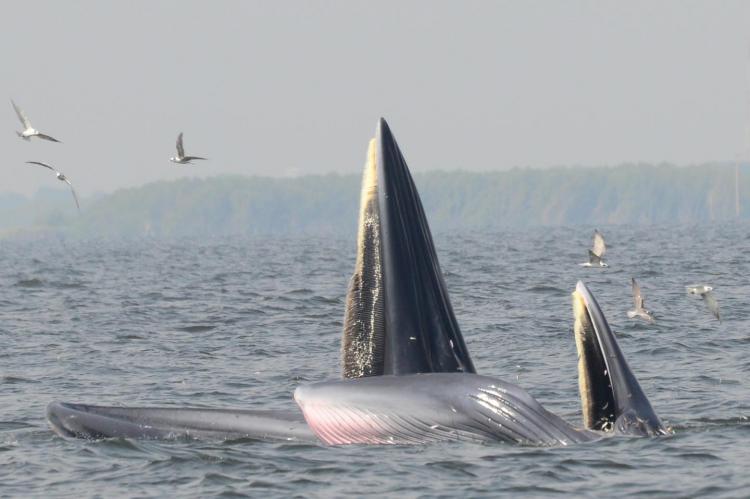Alternative feeding strategy observed in Bryde's whales
Some Bryde's whales in the upper Gulf of Thailand have been observed engaging in a new method of feeding. Researchers describe their observations in a recent issue of Current Biology.
Some whales feed by lunge-feeding, in which they open their mouth wide and lunge forward. The massive quantity of water—including small fish—that ends out in their mouths is then strained through a series of baleen plates. This causes the small fish to be trapped in their mouth.
However, some Bryde's whales have been observed to employ another feeding strategy called tread-water feeding. This method involves the whales opening their mouths at the surface, passively allowing water and prey to enter. This appeared to cause the anchovies nearby to lose their sense of direction and they simply flowed right into the whales' mouths.
"Previously, all studies have shown that baleen whales, including rorqual whales, perform active chasing and feeding," said Takashi Iwata, now at the University of St Andrews.
"We were surprised to find that Bryde's whales feed on small fish by opening their mouth until the lower jaw contacts the sea surface and waiting for the prey to enter their mouth."
Thirty-one whales were seen to engage in this behaviour on 58 different occasions.
Why do the whales do this?
A possible reason is that the whales were simply going to where their prey was. The location where the behaviour was observed was low in oxygen due to sewage flowing in from nearby rivers. As a result, the small fish that comprises the whale's diet tend to be found near the surface.
Another reason is that this method allowed the whales to exert much less effort, compared to lunge-feeding.
In the spirit of monkey-see-monkey-do, the whales exhibiting the behaviour included eight pairs of adult whales and their calves.
"Our findings suggest that calves might learn tread-water feeding by imitating adults," Iwata said.
"Moreover, because imitation is an important aspect of social learning, the tread-water feeding of the adult-calf pairs in this study implies social learning."





























